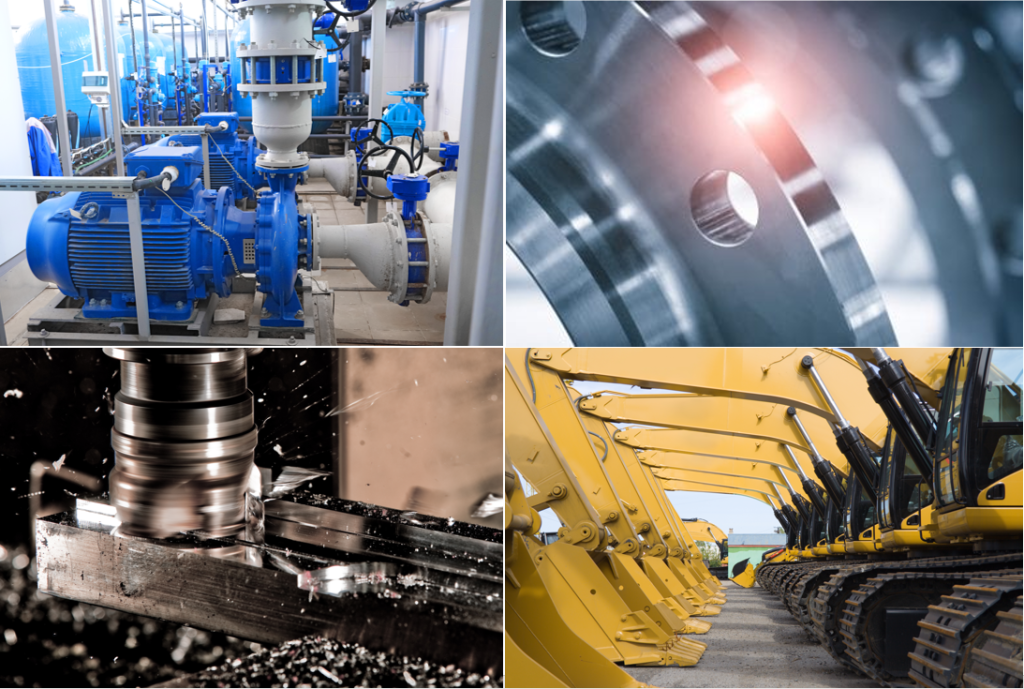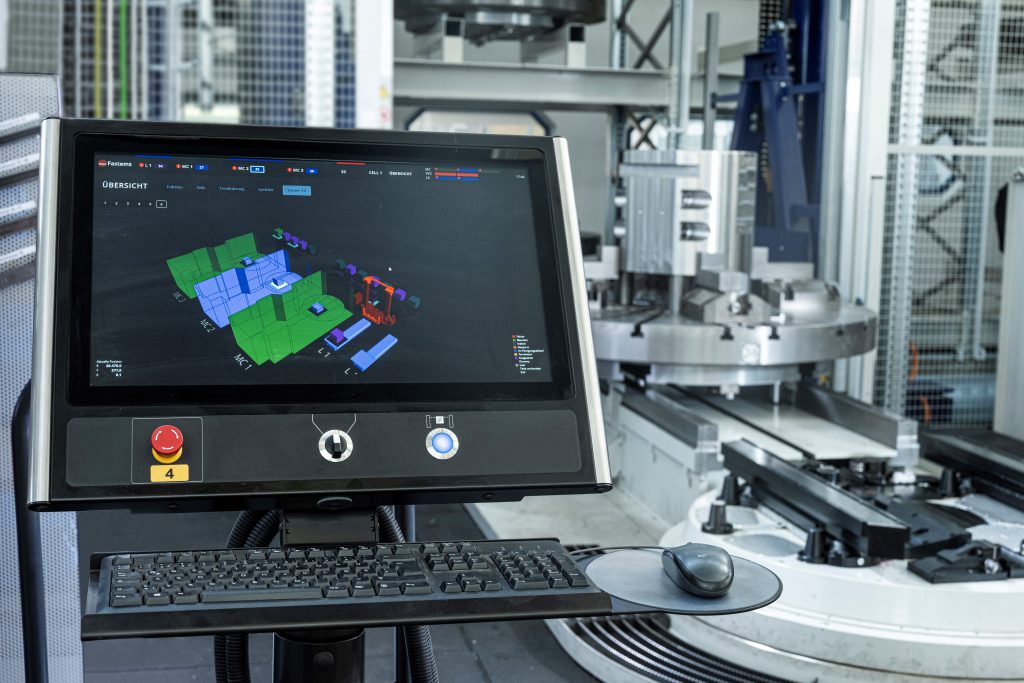
The Future of CNC Manufacturing
How to Manage the Increasing Complexity?
The future of CNC manufacturing is characterized by an increasing level of complexity. More product variants, changes in demand, evolving technology, lead time requirements and cost pressures all highlight the need to achieve production resilience – the combination of flexibility and efficiency. To summarize, the five essential points on the future of CNC manufacturing are:
- Shift towards ‘high-mix, low-volume’ manufacturing
- More ‘done-in-one’ machining with multi-purpose CNC machines
- More automation of CNC machines as well as CNC supportive processes
- Production planning and resource management software enable full production control
- Megatrends of sustainability, manufacturing re-shoring and availability of workforce shape the industry
The bottom line for CNC manufacturers? The future requires the adoption of many new competencies and can’t be faced by just buying more (advanced) milling, turning or other CNC machines. The nature of manufacturing jobs is also shifting tremendously, from changing workpieces to/form machines to managing manufacturing operations or developing daily operations and processes.
A note about the title: we, too, see the irony around it as in future the utilization of substractive machining processes most likely declines, paving the way for additive (or hybrid) manufacturing technologies. This makes the future to be a bit less of CNC and more of just manufacturing to be precise.
The Future on Three Levels
To go deeper, let’s review the characteristics and trends of future CNC manufacturing in three levels: the entire industry, an individual manufacturer and shop floors. Please note most of the trends pose effects on many levels besides where they are placed below.
The manufacturing industry

Competitivity, shorter value chains and sustainability targets are enabled by automation that also makes manufacturing jobs more meaningful and safe:
Customer value and profitability challenges.To stay competitive, manufacturers need constantly to deliver more in terms of product features, quality, selection, price, delivery time, service and more. For individual manufacturers, this means increasing high-mix, low-volume production and creates a decisive challenge for profitability, driving the need for developing better ways to manufacture. Especially in the case of more advanced machining applications, manufacturing is increasingly a source of competitive advantage for industrial companies.
Increasing level of automation is obvious but if one should look for proof or patterns, the reports by International Federation of Robotics (IFR) show about 6 % average annual growth for installed robot arms. To get an idea about the magnitude, based on IRF’s data, Oxford economics concludes that by assuming a 30 % faster robotic adoption rate vs baseline could lead into adding 4,9 trillion EUR or 5,3 % of world GDP in 2030! It’s notable that automation doesn’t spread only in terms of automation rate that deals with the amount of machinery and/or devices automated by also the level of automation meaning automating tasks such as production planning, highlighted also by IFR as one future trend. For more info see our CNC automation best practices.
Sustainability is of fundamental importance for the future of our planet and the humanity. Sustainability can be boiled down to three essential perspectives also known as triple-P for people, planet and profitability. In order to fight the climate change by reducing CO2 emissions, the manufacturing industry needs higher resource efficiency, more timely production, less waste and the adoption of the circular economy. This development simply isn’t possible without automation that also helps companies to do better business and makes manufacturing jobs more meaningful and safe. For societies at large, a competitive manufacturing industry supports the development of healthy national economics enabling people’s well-being in the long run.
Changes in globalization, demographics and manufacturing jobs. As highlighted by the covid-19 pandemic, global value chains where manufacturing is very distant from the end-product market has their challenges and risks. We see re-shoring and more local manufacturing taking place, enabled by automation that makes manufacturing profitable anywhere in the world. Furthermore, aging population and the aspirations of younger generations cause challenges for finding skilled people for the manufacturing jobs, limiting company growth. The younger generation can see manufacturing as uninteresting industry to work on but this is a grave misconception as intelligent automation revolutionizes the the operators work and has proven to help with recruiting at Fastems’ customers such as one Finnish subcontractor, Joensuun CNC-machining
Manufacturing companies

The requirements on industrial manufacturers are growing, leading to high-mix-low-volume production. Connections between factories also become more transparent:
Increasing customization and variants. Industrial products are getting more complicated and tailored per need. The average lifespan of a workpiece in production is also getting shorter and more uncertain. Combined with growing lead time pressures the requirements for manufacturing to combine efficiency with flexibility and transparency becomes essential.
Constant changes in the markets can mean, among other things, overall demand volatility or changes in the demand mix requiring fast adaption. This calls for manufacturing resilience. Shorter planning cycles can be due to contractual causes meaning that machine shops – or product owners – don’t know what they will be manufacturing after a month or two. This is also a symptom of the above drivers.
Quality and traceability requirements are getting more demanding not just in aerospace but in the machine building industries in general. Never-ending pressure to cut cost and reduce tied capital is always present, calling for companies to find new ways to drive manufacturing profitability and efficient use of capital. This is especially true when manufacturing re-shoring is happening.
Factories are getting more inter-connected and as manufacturing almost always happens in some network, transparency and data sharing are a must for efficiency and flexibility. Enabled by manufacturing operations management software, in the world of hyper-connected factories one could know when the parts needed in your assembly are arriving and you’d also know – without separately asking or checking – that the necessary quality features and checks are fulfilled.
CNC machining & shopfloors

Automated, multi-purpose CNC machines popularize. Supported by process and data system integration, production planning software (like Fastems MMS) enable production control:
More ‘done-in-one’ machining. Multi-purpose machine tools are getting more common, meaning the machining processes get completed with less clamping and often within one machine such as turn-mill or 4 or 5-axis milling machine. This creates more requirements for designing the workpieces and deciding on proper manufacturing methods. For example, NC-programs are no longer done using the CNC machines.
More automation means more robot or crane-based transferring of workpieces or pallets. Automation needs stable processes and more higher-level manufacturing operations planning to avoid production bottlenecks caused by e.g. the higher spindle hours. In general automation offers decisive benefits that you can read more in this page.
More process and device integration. Processes supporting the CNC machining like washing, measuring, marking, finishing and so on, are getting integrated into automation systems for higher productivity and output, more stable processes, faster lead times and more unmanned hours. This means lot’s of process level designing and makes sophisticated production management tools like Fastems MMS absolutely necessary.
More production planning and production resource management challenges. One of the main challenges in batch production of medium to high mix is how to manage various production resources and in particular, information. As the production happens as an interplay between people, software and machinery, there needs to be a conductor leading the orchestra. For that role, excel, despite its exceptionally wide use, simply won’t do in handling the complexities efficiently enough. Interested in what could?
The continuous need of extracting value out of novel technologies. The field of manufacturing evolves quickly: the introduction of additive manufacturing, various forms and levels of automation, AGVs, connectivity options, more sophisticated software… The challenge then becomes, how to seize the opportunities at the right moment and make the most out of them? For example, what, exactly should AGVs be used for? All of these questions highlight the need for automation and production development partner with experience on applying the technologies.
Intelligent CNC Automation is The Future
The uncertainties around the future can be managed by proper planning, tools and mindset. As intelligent automation combines the efficiencies of physical movement with process integration and production planning, it makes high-mix-low-volume manufacturing profitable and resilient – anywhere in the world. By renewing the daily life of the production managers and CNC operators, it also makes work more meaningful and safe, completing the triple-P sustainability framework for planet, people and profits.
Here are few tools for you:
- See how automation and sustainability mix
- The best practices around CNC automation
- Our CNC automation guide and webinar recording on profitable batch production
- Automating high-mix, low-volume CNC manufacturing
- Explore our automation offering

Want to know more? Contact us!
If you’d like to learn more about the future of manufacturing, be in touch!

Contact us
"*" indicates required fields